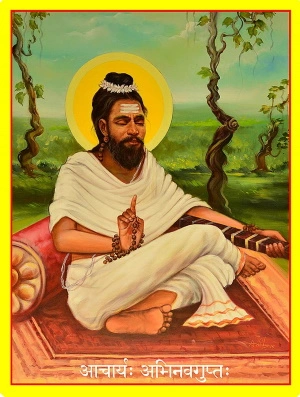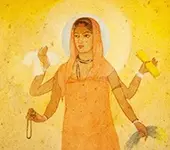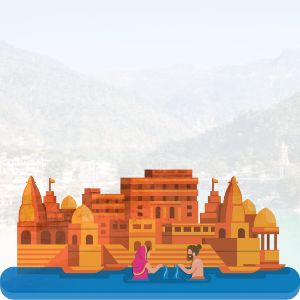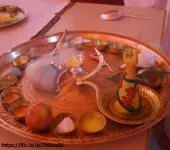Abhinavagupta

Abhinavagupta was a profound scholar of Kashmir during the second half of the 10th century CE.
He was a philosopher, mystic, and commentator of religious scriptures.
Birth: 950 CE
Demise: 1016 CE
Father: Narasimhagupta
Mother: Vimalakala
He was considered as a Yoginibhu, a superhuman born out of the union of a Siddha and a Yogini.
He was Jeevanmukta (freed from the shackles of worldly life).
Gurus of Abhinavagupta
- Vyakarana - Narasimhagupta
- Tantra - Vamananatha
- Brahmavidya - Bhutiraja
- Shaivism - Bhutirajatanaya
- Krama and Trika - Lakshmanagupta
- Dhwani (suggestive poetry) - Induraja
- Drama - Bhattatota
Abhinavagupta during his time was considered as the highest scholar by the followers of the disciplines - Siddhanta, Vama, Bhairava, Yamala, Kaula, Trika, and Ekavira.
His works
Abhinavagupta has written his own books as well as commentaries.
- Tantraloka - It covers the tantric principles given in the 64 Shaiva Agamas.
Kula, Tantra, and Krama systems are dealt with in detail.
It is a complete guide to Shaivism covering both theoretical and practical aspects.
Tantraloka is spread over 37 chapters.
Study of Tantraloka and its practice can make the sadhaka a Bhairava himself.
- Tantrasara - This is a summary of Tantraloka.
- Tantravatadhanika - A very brief summary of Tantraloka.
- Paramarthasara - Essentials of Trika system.
- Malinivijayavartika - Kashmir Shaivism.
- Bodhapanchadashika - Monistic Shaivism.
- Ishvarapratyabhijna Vimarshini - Commentary on Ishvarapratyabhijna Karika of Utpaladeva.
- Ishvarapratyabhijna Vivriti Vimarshini - A more detailed commentary.
- Paratrisika Vivarana - Commentary of Paratrisika
- Bhagavad Gitartha Samgraha - Commentary on Bhagavad Gita.
- Abhinava Bharati - Commentary on Natyashastra of Bharatamuni.
- Dhvanyavaloka Lochana - Commentary on Dhvanyavaloka of Anandavardhana.
- Rahasyapanchadashika.
- Paramathacharcha.
- Anuttarastika.
- Paramarthadwadashika.
- Mahopadeshavimshatika.
- Tantrocchaya.
- Bimba Pratibimba Vada.
- Paryantapanchashika.
- Kramastotra.
- Bhairavastotra.
- Dehastha Devata Stotra.
- Prakarana Vivarana.
- Prakeernaka Vivarana.
- Purvapanchika.
Abhinavagupta’s philosophy
- Shiva is the one and only universal reality.
- Shakti is the nature of Shiva.
- I-consciousness is his static aspect.
- His dynamic aspect is fivefold - srishti, stithi, samhara, tirobhava, and anugraha.
- His dynamic aspect itself is called Shakti.
- The difference between Shiva and Shakti is only in the name.
- Shiva through Shakti manifests the world.
- He brings about all the changes.
- He doesn’t change himself.
- The world is a reflection on the cosmic consciousness.
- The world is a real manifestation of the supreme reality, Shiva.
- Jiva is Shiva himself.
- The body is a place of worship.
- All Devatas are present in the body.
- The body is the perfect temple for worship.
- Diksha from an able Guru is necessary for moksha.
- Mantra japa and deep contemplation are needed for this.
- Methods of sadhana vary according to the level of the sadhaka.
- Meditating upon Brahman is the fastest way to attain Shiva-hood.
Recommended for you
Mantra For Protection From Thieves

ॐ ह्रीं नमो भगवति महामाये मम सर्वपशुजनमनश्चक्षुस्तिरस्....
Click here to know more..How did Bharata Varsha get its name?
 Click here to know more..
Click here to know more..
Ganga Stotram

देवि सुरेश्वरि भगवति गङ्गे त्रिभुवनतारिणि तरलतरङ्गे। श....
Click here to know more..
English Topics
Rare Topics
Click on any topic to open
- 237 The Practice of Bhojana Sadhana
- 236 Words of Wisdom - 2
- 235 Defining Goodness - Sanatana Dharma's Perspective
- 234 Vibhishana in Ramayana - A Tale of Morality, Loyalty, and Redemption
- 233 God will not let you break
- 232 A Glimpse into the 64 Arts
- 231 Chembai Vaidyanatha Bhagavatar - A Carnatic Maestro's Musical Odyssey
- 230 Understanding Adhyāsa: A Closer Look at False Attribution
- 229 Is Family's Permission Necessary For Becoming Sanyasi ?
- 228 Faith In Upasana
Please wait while the audio list loads..
30
Ganapathy
Shiva
Hanuman
Devi
Vishnu Sahasranama
Mahabharatam
Practical Wisdom
Yoga Vasishta
Vedas
Rituals
Rare Topics
Devi Mahatmyam
Glory of Venkatesha
Shani Mahatmya
Story of Sri Yantra
Rudram Explained
Atharva Sheersha
Sri Suktam
Kathopanishad
Ramayana
Mystique
Mantra Shastra
Bharat Matha
Bhagavatam
Astrology
Temples
Spiritual books
Purana Stories
Festivals
Sages and Saints
